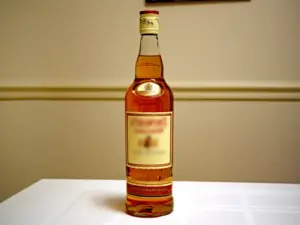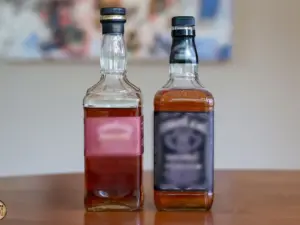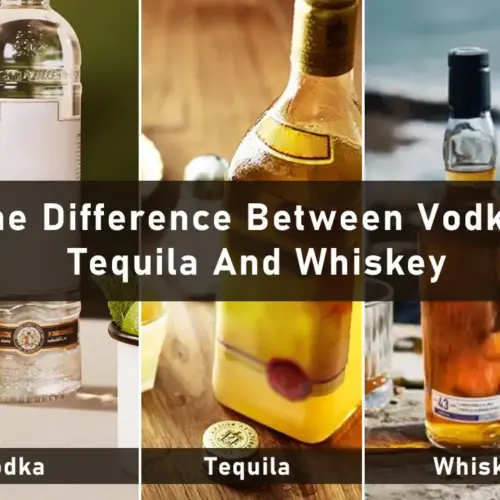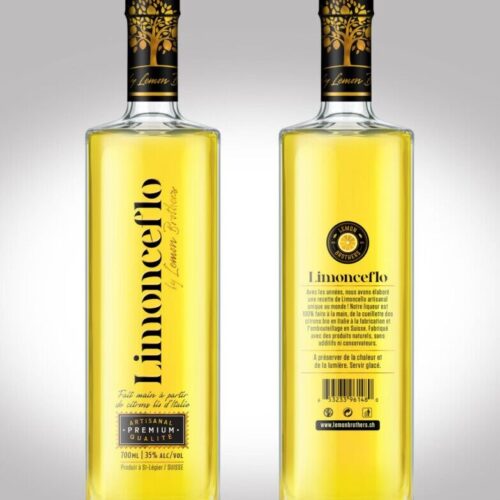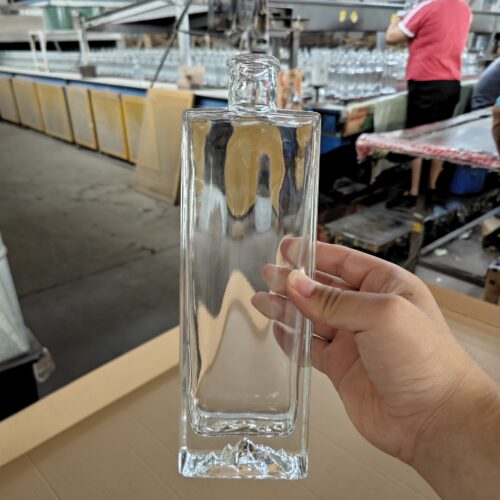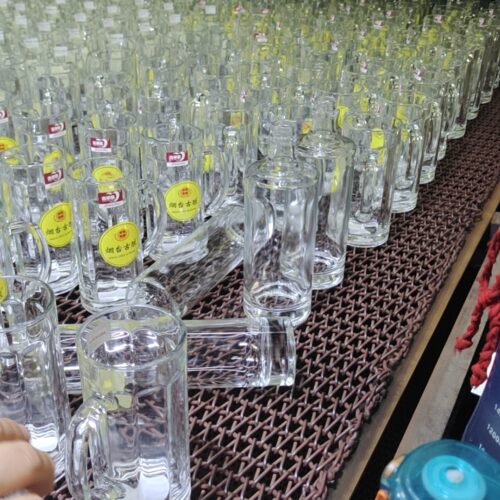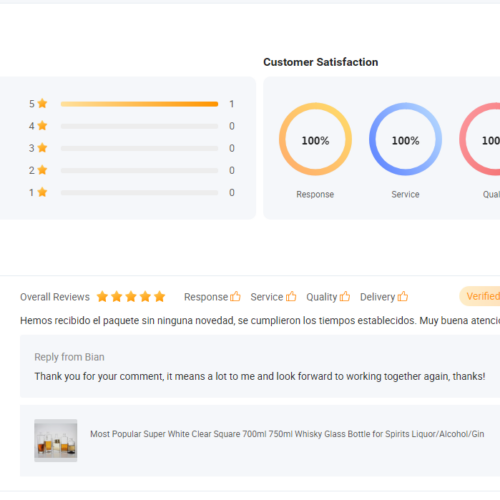Among liquor bottles, 70cl and 750ml bottle sizes are the most used ones. These sizes carry the same volume, but why do they consist of different units? This guide will highlight the differences between 70cl vs. 750ml liquor bottle sizes and debunk the intricacies of the units.
These bottles are very significant for both consumers and producers alike. Whether you are a wine lover, own a distillery business, or plan to launch one, understanding the differences between these bottles is paramount. So, hold tight, and let’s get into it!
Overview of 70cl and 750ml Bottle Size
70cl and 750ml liquor bottles contain 700 ml and 750ml of liquor respectively. They have a tiny difference of just 50ml when it comes to their volume and capacity. However, 750ml bottles are standard in the USA, and 70cl bottle sizes are prevalent in Europe.
The cl stands for centiliter, whereas the ml stands for milliliters. European countries use a metric system. So, the bottles in Europe are standard as centimeters. On the other hand, the United States of America uses an imperial measurement system that prefers millimeters.
According to this system, the companies label and sell the liquors in millimeters. Notably, you won’t see any 750mL liquor bottles in Europe as it is illegal to use that size there. Similarly, distillery businesses in the USA do not use bottles of 70cL size as the 750mL bottle size is more acceptable in the USA.
Differences Between 70cl and 750ml Liquor Bottle Size
The 70cl and 750mL may seem similar, but they have massive differences. Those dissimilarities among these define their usability in different regions of the world. In the section below, we will explore their differences with detailed explanations. Before we dive in, here is a quick comparison table showing their distinctions:
| Aspect | 70cl Bottle | 750ml Bottle |
| Measuring Units | Centiliter (cl) | Milliliter (ml) |
| Regulatory Compliance | Required in Europe; 750ml not allowed | Standard in the USA; however, not mandatory |
| Capacity | 700 ml | 750 ml |
| Serving Capacity | Slightly less for 6 servings | Offer exact 6 servings |
| Availability | Predominantly in Europe | Predominantly in the USA |
| Design & Shape | Sleeker and taller | Broader and heavier |
| Usability | More common in metric system regions | More common in imperial system regions |
1- Units & Usability
The first and most crucial difference between 70cl and 750mL bottles is their measuring units. Two universal measurement systems are followed worldwide. As I have said earlier, the USA and EU follow imperial and metric unit systems, respectively.
The centiliter unit is used in the metric system, and the milliliter unit is used in the imperial system. So, the distillery businesses or liquor producers working in these two regions follow different units. For example, a company that serves in the USA uses 750mL bottle size, and vice versa.
In 1990, the European Union passed legislation. According to this legislation, the distillery business will sell the liquor in 70cl or 700mL bottles instead of using 75 cL (750mL) as standard. Due to this legislation, this bottle size is standardized in European countries.
The difference between a 70cl and 750cl spirit bottle is just 50 ml, which is insignificant. However, the legislation forced the liquor producers to rebrand their bottles and use 70cl. America, Canada, and many other countries allow the distillery business to use 750ml bottles as standards.
2- Liquor Volume or Capacity
There is a minimal difference between the capacity 70cl and 750mL bottle sizes. However, every slight difference matters in the liquor industry with strict regulatory compliance. The 70cl liquor bottle size contains 50mL less liquor than the 750ml bottle.
Let me explain these simple words. 70cl is equivalent to the 700 ml of the bottle since 1 centiliter is equal to 10 milliliters. However, the retailers charge almost the same price (in different currencies) for both bottle sizes in the USA and Europe. Customers in the USA get 50 mL more liquor than people in Europe.
3- Serving Capacity
Knowing the serving size of the liquor bottle is very important for the customers. Usually, the 750ml liquor bottle serves 6 people (giving one glass to each person). This bottle size suits a family dinner or a small group of friends wanting to have fun.
A 70-liquor bottle does not serve precisely six people as it contains 50 ml less liquor than a 750 ml bottle. However, the difference is not too significant, and you can cover the difference by giving each person slightly less liquor.
4- Design & Shape
There are no such restrictions on the shape and design of the liquor bottles. The rules and legislation also do not bind the manufacturers and producers. Therefore, different shaped and designed liquor bottles are available in 70cl and 750 sizes.
Generally, the 70cl bottles are sleeker and attract customers. They carry less volume and are more towards slimy and taller sides. They are more appealing from a distance than 750 ml bottles, which are broader and heavier.
As I said, there are no hard and fast rules about the shapes of the bottles. So, the distillery businesses try their best to make bottles with more stylish and attractive shapes. The reason is that the sleek and attractive bottles attract customers from the retail store’s shelves.
5- Availability
You won’t see liquor bottles with 70cl capacity in the United States or Canada. Similarly, 750ml bottles are rare in Europe. The government does not allow the production and selling of 750ml liquor bottles. The producers also don’t make such bottles; otherwise, they will face heavy fines.
As I said, 750ml bottle size is standard in the USA. This bottle size is the most used and sold liquor bottle in this region of the world. Conversely, the 70cl bottles are available in Europe. In some countries, 70cl and 750ml liquor bottles are legal and available. Mexico is an example where both sizes are legal and accepted.
6- Regulatory Compliance
It is important to note that there is strict regulatory compliance in Europe. Distillery businesses have to follow government guidelines and regulations. However, United has no strict restrictions regarding the size of the bottles.
For decades, the 750ml bottle size has been used. This size of the bottles is more in demand and accepted in the USA. If any manufacturer produces a 70cl bottle, there is no fine or regulatory violation in the US. However, the public is more inclined towards 750 ml as standard, so selling 70cl would be hard for the producers.
In the United States, it is more about the acceptability of the public. However, European countries do not allow 750 ml of liquor bottles. All the distillery businesses operating in Europe must follow the rule and produce 70cl spirit bottles instead of 750ml.
Different Size of Liquor Bottles
There are different sizes of liquor bottles available in the market. They differ in prices depending upon their volume. 70cl and 750ml are just one of those bottles. Both the USA and European countries allow the usage of different-sized bottles to meet the customers’ requirements.
For example, customers in the USA can buy a bottle of just 50 ml for a single drink or shot. Similarly, European distillery shops also sell wine bottles of 100 mL (10cl) to address customers who may require the liquor in small amounts. Here is the table showing different bottle sizes being used actively in the EU and USA:
| Common Sizes in the USA | Common Sizes in the EU |
| 50 ml (Miniature) | 100 ml (10 cl) |
| 100 ml | 200 ml (20 cl) |
| 200 ml (Half Pint) | 350 ml (35 cl) |
| 375 ml (Pint) | 500 ml (50 cl) |
| 750 ml (Standard) | 700 ml (70 cl) |
| 1000 ml (Liter) | 100m ml (100 cl) |
Shape & Designing of Liquor Bottles
A variety of liquor bottle shapes are available in the market. As I said earlier, distillery businesses design bottles in different styles to stand out from the competition. The unique style and attractive design grab customers’ attention.
Newcomers in the distillery industry usually focus more on designs to get customers’ attention. In the section below, we will explore different designs for liquor bottles of different sizes.
1- Standard/Classic Liquor Bottles
These bottles have been on the market for decades but could be more sleek and attractive. They have long necks and comprehensive or broader bases. These bottles are trendy because they are classic and are shown in many movies and drama serials.
They are easy to use due to the broader base and can be put anywhere due to better stability at the base. Remember that long necks make the purging of a sprint easy. The established brands usually use these standard-designed bottles.
2- Square or Rectangular Bottles
These bottles’ design is considered a sign of luxury. The premium liquor comes in these square or rectangular bottle shapes. These shapes are more common in 750 ml or 1000 ml bottle sizes. Generally, liquor in such bottle shapes is costly and usually used in elite party functions.
3- Flask or Hip Flask Bottles
Flask-shaped bottles usually contain smaller amounts of liquor. Although this shape is attractive, it is only good when the liquor is supposed to be sold in lesser quantities, such as 200 ml or 350 ml. Their design is so compact that customers can carry these bottles in a pocket or purse.
4- Decanter Liquor Bottles
These bottle shapes are rare; you can only see such designs in special events such as grand parties or other occasions. They have smaller, narrower necks and more extensive bases. It is not compact in any way.
5- Oval Glass Bottles
These bottle shapes are also beautiful and give the feeling of premiumness. The oval shape is popular with 750 ml glass bottles, making them look unique and appealing. Their usability is appreciated in both the US and European markets.
6- Round Cylinder Liquor Bottles
This shape is more practical as it supports excellent holding and gripping. The round cylindrical bottles are easy to hold for an extended duration. It won’t be wrong to say that this bottle shape is one of the most used in the industry due to its ideal practicality.
Which Bottle Sizes Are More Common for Wine?
A 750 mL liquor bottle is considered standard in the United States. It is the most used and common for wine, vodka, and whiskey. In European countries, the bottle’s 700ml (70cl) size is standard for wine.
Remember that the distillery business tries to meet all the customer’s needs. Therefore, they also use other bottle sizes such as 100, 200, 385 mL, above 1000 ml, and 1500 mL. However, 750 mL is commonly used for wine.
Conclusion
Although both sizes may seem similar, the dissimilarity in volume can impact the number of servings. The 70 cL bottles contain 700 mL of liquor, while 750 mL bottles hold 50 mL more than the smaller bottles.
Whether you’re a business owner or a wine enthusiast, understanding 70cl and 750ml bottle sizes is crucial in making informed decisions. This guide has complete information about their differences, and hopefully, it will help you get the best of their ideas.

